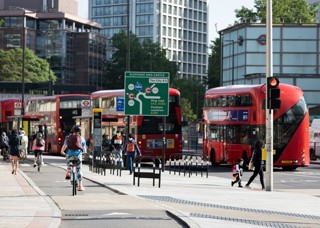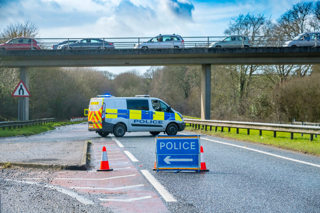The number of deaths on UK roads rose from 1,558 in 2021 to 1,695 in 2022 – an increase of 8.7% – according to new figures published by the Department for Transport (DfT).
Cyclist deaths was the only road user type to report a fall in 2022, with 85 deaths compared to 111 in 2021, however the number of cyclists killed or seriously injured rose to 5,602 – up by 500 year-on-year.
The number of car occupants who lost their lives is believed to have risen by 99, motorcyclist deaths rose by 44 and pedestrian fatalities increasing by 15.
Fatalities involving e-scooters rose to 12 last year compared to 10 in 2021.
The DfT says that the increase in casualty numbers, year-on-year, was due to the impact of national restrictions on 2021 casualty numbers.
“In the decade prior to the pandemic in 2020, fatalities had been broadly stable,” it added. “2022 broadly shows a return to pre-pandemic trends.”
In 2022, 55% of casualties were car occupants, 14% were pedestrians, 12% were motorcyclists and 12% were pedal cyclists.
The provisional data suggests that 75% of all fatalities and 62% of casualties of all severities were male in 2022.
The age group with the most male casualties of all severities was 30 to 49-year-olds, with 27,539 casualties.
For females, the 30 to 49-year-old age group also had the most casualties of all severities in 2022 with 16,341 casualties.
In terms of age groups, 3% of fatalities and 10% of casualties were aged 16 years old and under; 25% of fatalities and 29% of casualties were aged 17 to 29 years old; and 23% of fatalities and 7% of casualties were aged 70 years old and over.
AA president Edmund King said: “Our target should be for Vision Zero with no road deaths but we are still averaging just under five deaths every day on the roads. This is not acceptable.
“There needs to be more of a concerted effort and priority to aim for five-star drivers, on five-star roads in five-star cars. These disappointing and tragic figures show there is still some way to go to stop this carnage.”
Rebecca Guy, road safety manager at RoSPA, added: “Shockingly, of all fatalities in 2022, 75% of fatalities were male, with 62% of all casualties male too.
“When examining data on motorcyclist casualties, we can see there has been a year-on-year increase since 2019 of 5%. That will, in part, be due to the pandemic – but could also be related to the vast number of people joining the gig economy to supplement their income.
“At RoSPA, we would like to see road casualty data published as frequently as possible to allow us and the Government to analyse trends and risk factors faster, so that we can save more lives and prevent tragedies from happening.”
More people killed on London’s roads

Separate figures from Transport for London (TfL) show that the number of people who were killed or seriously injured in the capital increased by 11%, rising from 3,580 in 2021 to 3,974 in 2022.
TfL said that collective action is needed to achieve the Mayor's Vision Zero goal of eliminating death and serious injury from London’s streets by 2041.
People walking, cycling and motorcycling continue to be most at risk, making up 80% of all people killed or seriously injured in 2022.
Cars continued to be the main vehicle type involved in collisions in 2022, and are the other vehicle involved in 65% of all casualties on London’s roads.
Speeding remains the biggest risk to road users with around half of the 2022 fatal collisions in London (48 out of 99) reporting speed as a contributory factor.
TfL says it is committed to expanding its lowering speed limits programme, last month launching local engagement on plans to introduce 65km of new 20mph speed limits.
Walking and cycling commissioner, Will Norman, said: “This data shows that while significant progress is being made, further action is needed to eliminate deaths and serious injuries from London’s streets.
“That’s why we have accelerated our 20mph speed limit programme https://www.fleetnews.co.uk/news/car-industry-news/2023/03/31/new-20mph-speed-limits-introduced-across-london-today , are tightening the Direct Vision Safety standard for HGVs and working with the boroughs to deliver high-quality cycle routes.”
TfL is working with the Met Police to increase their capacity to take enforcement action against drivers and riders who speed.
It says it is currently on track to be able to take action on a million speeding offences by 2024/5, to provide a more effective deterrent to speeding.
The Met Police enforced around 620,000 speeding offences committed in 2022/23, an increase of 35% compared to the previous year.























Login to comment
Comments
No comments have been made yet.